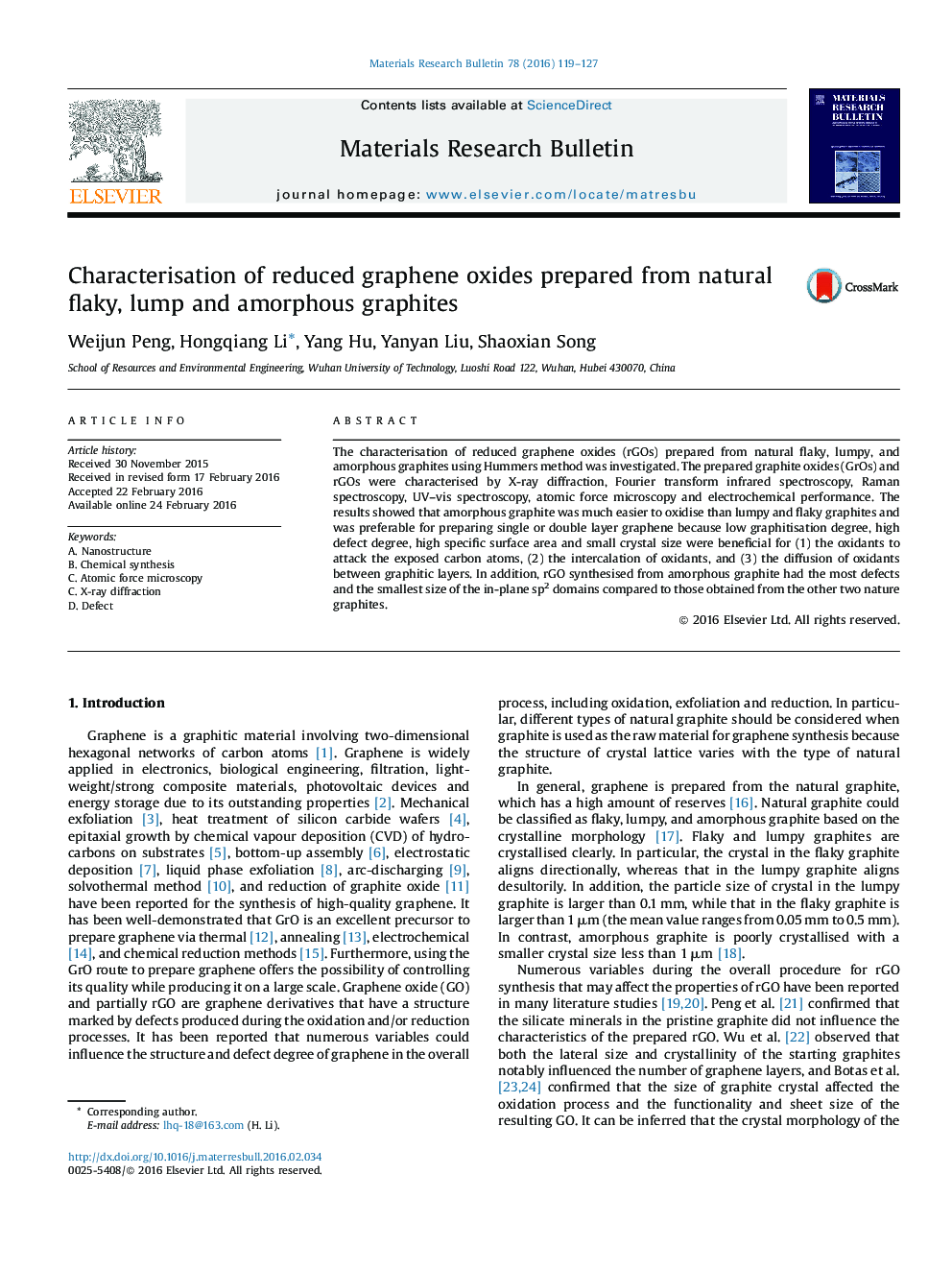| کد مقاله | کد نشریه | سال انتشار | مقاله انگلیسی | نسخه تمام متن |
|---|---|---|---|---|
| 1487125 | 1510697 | 2016 | 9 صفحه PDF | دانلود رایگان |
• Natural flaky, lumpy and amorphous graphites were used to synthesis rGO.
• Investigation the effect of the crystal morphology on the oxidation process of GrO and characteristics of prepared rGO.
• Low graphitisation degree, big specific surface area and small lateral size were beneficial to the oxidation of graphite.
The characterisation of reduced graphene oxides (rGOs) prepared from natural flaky, lumpy, and amorphous graphites using Hummers method was investigated. The prepared graphite oxides (GrOs) and rGOs were characterised by X-ray diffraction, Fourier transform infrared spectroscopy, Raman spectroscopy, UV–vis spectroscopy, atomic force microscopy and electrochemical performance. The results showed that amorphous graphite was much easier to oxidise than lumpy and flaky graphites and was preferable for preparing single or double layer graphene because low graphitisation degree, high defect degree, high specific surface area and small crystal size were beneficial for (1) the oxidants to attack the exposed carbon atoms, (2) the intercalation of oxidants, and (3) the diffusion of oxidants between graphitic layers. In addition, rGO synthesised from amorphous graphite had the most defects and the smallest size of the in-plane sp2 domains compared to those obtained from the other two nature graphites.
Figure optionsDownload as PowerPoint slide
Journal: Materials Research Bulletin - Volume 78, June 2016, Pages 119–127
